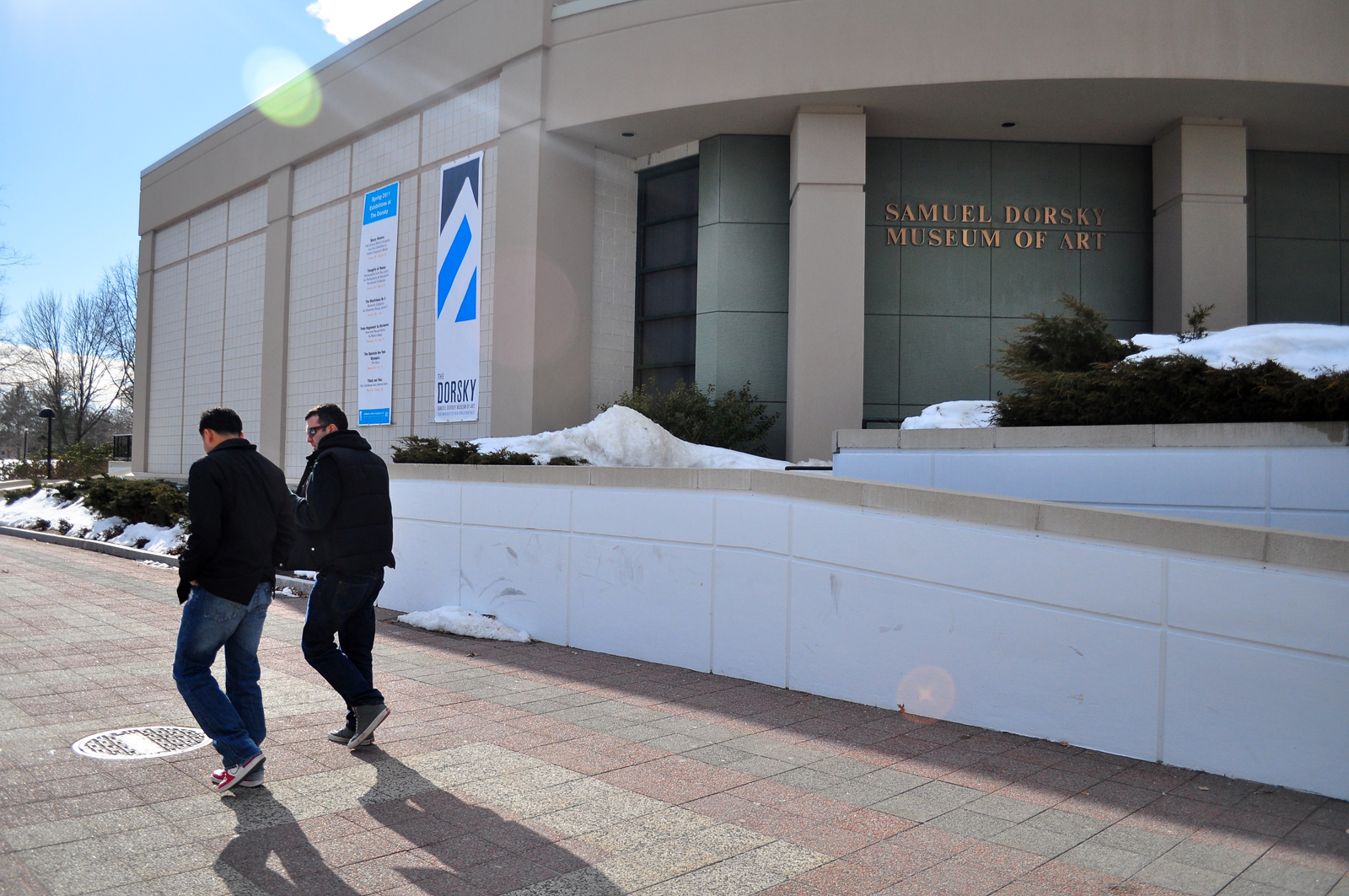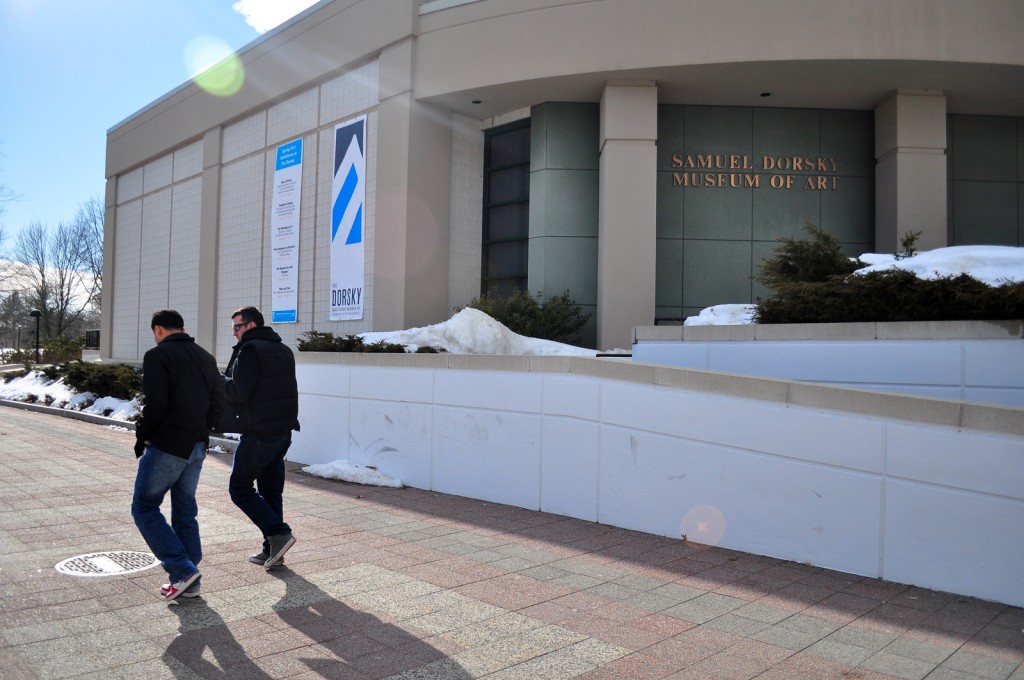

The Samuel Dorsky Museum of Art (SDMA) will be celebrating its 10th anniversary this year, with an official dedication in October 2011. The museum will begin the celebration with a number of new exhibits, followed by a published catalogue and a series of parties.
The SDMA began as the College Art Gallery in 1964 as one large room (now known as the Alice and Horace Chandler Gallery). Neil C. Trager, the former director, was able to secure funds to build other galleries. In October 2001, the museum expanded from 3,000 to 9,000 square feet and all the galleries were opened to the public.
“It’s a young museum,” said Sara Pasti, the Neil C. Trager director of SDMA. “Since we can’t create our niche on historic art, we can create one with contemporary artists. The Hudson Valley is filled with artists. So 100 years from now, we will have an exemplary amount of work.”
The museum began its celebration with an unveiling of the new Dorsky logo on Feb. 11. According to Pasti, they based the logo off the new SUNY New Paltz logo revealed last year. The Dorsky decal shows the same outline of the mountains, the silhouette of the Atrium with an additional capital “D” slanted on its side. “The Dorsky” is imprinted underneath the image.
“We’re thrilled with it. Hopefully, over time we’ll be called The Dorsky, which is an easier way to refer to the museum,” said Pasti.
Although Pasti has only been the director for two years, she said she is always thinking ahead.
“This is the beginning of our next 10 year cycle,” said Pasti. “It’s given me a chance to look back at exhibitions and see the legacy my predecessors set up that I can bring forth to the future.”
The Dorsky has also started to digitize their collections onto a website. Through www.hrvh.org/hvvacc, there are over 200 artworks featured from a collection of a variety of art mediums. In the fall, The Dorsky will have a physical exhibit to show the works going online.
“We’re hoping that all 15,000 objects in the museum will be online in the next three years,” said Pasti.
There will also be a catalogue published in June where people associated with the museum can write comments about The Dorsky and how much it meant to them, according to Pasti. The catalogue will also list all of the shows done in the past 10 years and their highlights.
The museum is currently focusing on the Hudson River heritage, artists and curators. The newest exhibit is Marco Maggi’s “From Huguenot to Microwave: New and Recent Works by Marco Maggi,” which is in the Alice and Horace and North Gallery until April 14. According to a New Paltz press release, Maggi’s “obsessively minimal yet coolly detailed artworks are studies in perception that reflect back, metaphorically and physically, on the viewer.”
Along with exhibits continuing from 2010, other exhibits will open including “The Upstate New York Olympics: Tim Davis” through July 17 in the Howard Greenberg Family Gallery and “Thick and Thin: Ken Landauer and Julianne Swartz” until Oct. 23 in the Sara Bedrick Gallery.
Specifically, The Dorsky is trying to focus on working to get more student involvement.
“Our biggest challenge is that we hope to bring students into the museum,” said Pasti. “We’d like to see the museum become part of their education and social life.”
Recently, The Dorsky sent out a student-wide e-mail with a survey asking what people would want to see at the museum. Pasti said some great ideas were flowing in, including staying open later.
“We’re always open for people proposing events,”
said Pasti.
Curator Brian Wallace said he encourages students to check out The Dorsky all-year round.
“All year we’re going to be showing a variety of artwork and people should poke their heads in pretty often because exhibits change every couple of months,” Wallace said. “I hope people will check our website frequently because we have a lot of events coming up involving comedians, a talk on the artist Marc Chagall and probably an event with the New Paltz cheerleading squad.”
Pasti said she hopes that student groups will want to hold events in the museum.
“It’s a place to go to get into another world,” said Pasti. “The value of art takes you out of your day-to-day life.”
